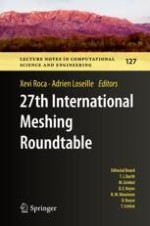2019 | OriginalPaper | Chapter
Towards Simulation-Driven Optimization of High-Order Meshes by the Target-Matrix Optimization Paradigm
Authors : Veselin Dobrev, Patrick Knupp, Tzanio Kolev, Vladimir Tomov
Published in: 27th International Meshing Roundtable
Publisher: Springer International Publishing
Activate our intelligent search to find suitable subject content or patents.
Select sections of text to find matching patents with Artificial Intelligence. powered by
Select sections of text to find additional relevant content using AI-assisted search. powered by
